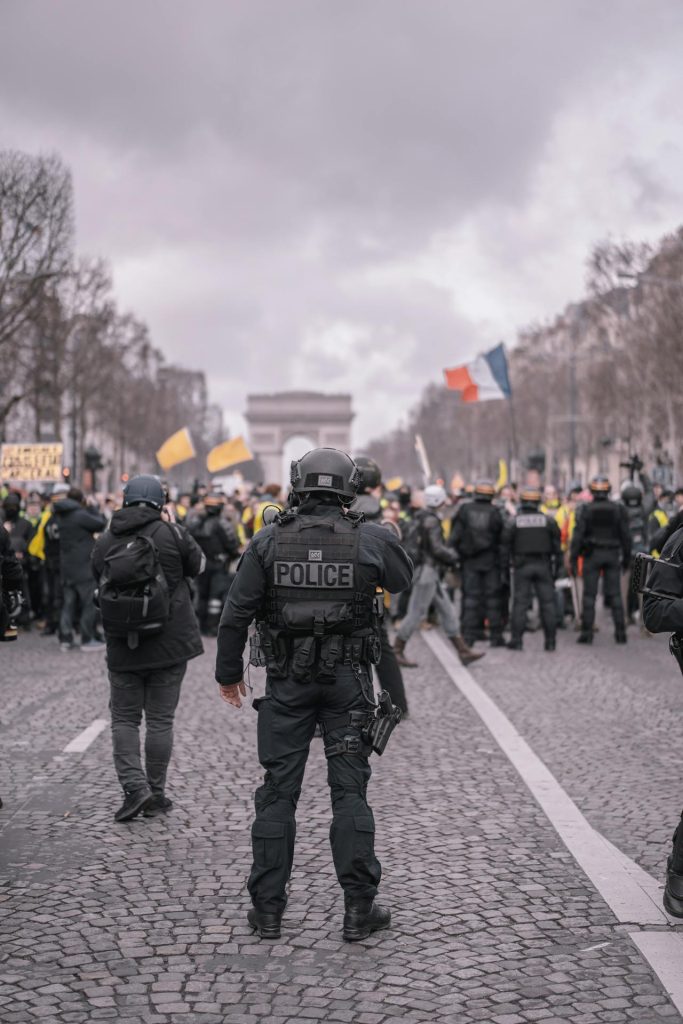The Importance of Police Patches
Police patches are more than just pieces of fabric sewn onto uniforms; they are powerful symbols that represent the values, history, and identity of police departments. These patches serve to unify officers, foster a sense of pride, and build a connection between the police force and the community. In this comprehensive guide, we will explore the symbolic power of police patches, examining their history, design elements, and the role they play in strengthening identity and unity within the force. By understanding the significance of police patches, we can appreciate the deep meaning behind these symbols and their impact on law enforcement.
1. The Historical Roots of Police Patches
Early Beginnings
The use of patches in law enforcement can be traced back to the 19th century. Early police patches were simple, often featuring basic designs that identified the officer’s department or rank.
Example: In the late 1800s, police officers in New York City began wearing patches that identified their precinct, helping to establish the practice of using patches for identification and differentiation.
Development Through the 20th Century
As police departments became more organized and professionalized, the design and use of patches evolved. By the mid-20th century, police patches had become more elaborate, incorporating symbols and designs that reflected the values and mission of the department.
Example: The Los Angeles Police Department (LAPD) introduced a patch featuring the city’s iconic seal, symbolizing the department’s commitment to serving the community and upholding justice.
2. Design Elements of Police Patches
Symbols and Icons
Police patches often feature a variety of symbols and icons, each carrying specific meanings and historical significance. Common elements include eagles, stars, badges, and the scales of justice.
Example: The patch of the Chicago Police Department includes an eagle, symbolizing strength and vigilance, and stars representing the city’s core values of service, justice, and honor.
Colors and Their Meanings
The colors used in police patches are carefully chosen to convey specific messages and values. Blue, gold, black, and white are frequently used colors in police patches.
Example: Blue represents loyalty and trust, gold signifies honor and excellence, black symbolizes authority and protection, and white denotes purity and integrity.
Text and Numbers
Text and numbers on police patches provide additional context and identification. This can include the name of the department, the officer’s rank or unit, and the year of establishment.
Example: The patch of the New York Police Department (NYPD) includes the department’s name, the officer’s rank, and the founding year, 1845, highlighting the department’s long history and legacy.
3. The Role of Police Patches in Strengthening Identity
Fostering Pride and Loyalty
Wearing a police patch fosters a sense of pride and loyalty among officers. It signifies membership in a respected institution dedicated to serving and protecting the community.
Example: Officers in the Houston Police Department wear patches featuring the department’s logo and motto, instilling a sense of pride and commitment to their duties.
Building a Unified Force
Police patches help build a unified force by creating a common identity among officers. This unity is essential for effective teamwork and collaboration within the department.
Example: The patch of the Miami Police Department features a cohesive design that represents the diverse backgrounds and unified mission of the department’s officers.
Connecting to the Community
Police patches also serve to connect the police force with the community. They symbolize the department’s presence and commitment to public safety, fostering trust and cooperation.
Example: The patch of the Seattle Police Department includes elements that reflect the city’s culture and heritage, strengthening the bond between the police force and the community it serves.
4. The Symbolic Power of Police Patches in Honoring Service and Sacrifice
Recognizing Achievements and Milestones
Police patches are often used to recognize individual and departmental achievements and milestones. These patches serve as a visual representation of dedication and excellence.
Example: Special patches are created for officers who complete advanced training programs, such as SWAT or K-9 units, recognizing their specialized skills and contributions.
Honoring Fallen Officers
Commemorative patches are frequently created to honor fallen officers, ensuring that their sacrifice is remembered and respected by both the force and the community.
Example: The patch of the Philadelphia Police Department includes a memorial ribbon and the names of officers who have lost their lives in the line of duty, serving as a poignant reminder of their sacrifice.
Celebrating Anniversaries and Historical Events
Police patches are also designed to commemorate significant anniversaries and historical events, celebrating the department’s legacy and milestones.
Example: The patch for the 150th anniversary of the Boston Police Department features elements that highlight the department’s long history and key achievements, fostering a sense of pride and continuity.
5. The Process of Creating Police Patches
Design Conceptualization
The creation of a police patch begins with conceptualizing the design. This involves identifying the key elements and symbols that represent the department’s values, mission, and history.
Tips:
- Purpose: Define the purpose of the patch and what it should represent.
- Symbols: Choose symbols and icons that reflect the department’s heritage and mission.
- Colors: Select colors that convey the desired messages and values.
Example: A police department designing a new patch might choose to include symbols like an eagle, a badge, and the scales of justice to represent strength, authority, and fairness.
Approval and Production
Once the design is finalized, it must be approved by department leadership. The approved design is then sent to manufacturers for production, where it is embroidered or printed onto fabric.
Tips:
- Review: Conduct a thorough review of the design to ensure accuracy and completeness.
- Feedback: Gather feedback from department members and make necessary adjustments.
- Quality: Choose a reputable manufacturer to ensure high-quality production.
Example: A police department reviews and approves a new patch design, which is then produced by a specialized manufacturer known for quality embroidered patches.
Distribution and Use
After production, the patches are distributed to officers and used on uniforms, equipment, and promotional materials. Consistent use of the patch reinforces the department’s identity and values.
Tips:
- Uniform Placement: Follow guidelines for patch placement on uniforms, such as on shoulders, sleeves, or chest areas.
- Equipment: Apply patches to police vehicles, gear, and other equipment to enhance visibility and recognition.
- Promotional Items: Use the patch on promotional items like hats, shirts, and challenge coins to foster community support.
Example: A police department distributes new patches to all officers, ensuring they are worn on uniforms and displayed on police vehicles and equipment.
6. The Evolution of Police Patches
Modern Innovations
Advancements in design technology and materials have led to modern innovations in police patches. Today’s patches can include features like reflective materials, glow-in-the-dark elements, and intricate embroidery.
Example: A police department introduces new patches with reflective thread, enhancing visibility and safety during nighttime operations.
Commemorative and Special Edition Patches
In addition to standard patches, police departments often create commemorative and special edition patches to mark significant events, anniversaries, and achievements.
Example: The NYPD creates a special commemorative patch for the 20th anniversary of September 11, 2001, honoring the fallen officers and the department’s resilience.
7. The Impact of Police Patches Beyond the Department
Community Recognition and Support
Police patches play a significant role in fostering community recognition and support. They symbolize the department’s commitment to public safety and community service.
Example: A community holds a fundraiser to support their local police department, using the department’s patch on promotional materials to rally support.
Collector’s Items and Memorabilia
Police patches often become valuable collector’s items and memorabilia, cherished by current and former officers, their families, and enthusiasts.
Example: A retired police officer collects patches from different departments across the country, preserving them in a display case as a tribute to his career and the law enforcement profession.
Pop Culture and Fashion
Police patches have also made their way into pop culture and fashion, with clothing brands and accessories incorporating these symbols into their designs.
Example: A fashion brand releases a line of jackets and hats featuring police patches, appealing to consumers who admire the bravery and dedication of law enforcement officers.
8. Preserving the Legacy of Police Patches
Archiving and Documentation
Preserving the legacy of police patches involves archiving and documenting their history and significance. This ensures that future generations can appreciate and learn from these symbols.
Tips:
- Archives: Create an archive of patch designs, including historical information and stories.
- Documentation: Document the creation process, symbolism, and significance of each patch.
- Exhibits: Organize exhibits and displays to showcase the history and evolution of police patches.
Example: A police department creates a digital archive of their patches, including photos, descriptions, and historical context, accessible to the public and department members.
Educational Initiatives
Educational initiatives can help preserve and promote the legacy of police patches. This includes incorporating patch history into training programs and public outreach.
Tips:
- Training: Include lessons on the history and significance of patches in police training programs.
- Public Outreach: Organize presentations and events to educate the community about the department’s heritage and patches.
- Publications: Produce publications, such as books and articles, that explore the history and impact of police patches.
Example: A police department includes a section on patch history in their new recruit training program, teaching recruits about the heritage they are becoming a part of.
9. Embracing the Future of Police Patches
Adapting to Changing Times
As police departments evolve and adapt to new challenges, their patches must also reflect these changes. This includes incorporating new symbols and elements that represent modern law enforcement and community service.
Tips:
- Innovation: Embrace new design trends and technologies to create patches that reflect the department’s current mission and values.
- Inclusivity: Ensure patches represent the diversity and inclusivity of the department and community.
- Sustainability: Consider environmentally friendly materials and production methods for patches.
Example: A police department updates their patch to include symbols of modern law enforcement equipment and techniques, reflecting their commitment to innovation and progress.
The Enduring Significance of Police Patches
Police patches are powerful symbols that represent the values, history, and identity of police departments. They foster a sense of pride, unity, and connection among officers and the community. By understanding the symbolic power of police patches, we can appreciate the deep meaning behind these symbols and their impact on law enforcement.
From their historical roots to their modern innovations, police patches have evolved to reflect the values and missions of the departments they represent. By preserving and promoting the legacy of police patches, we ensure that future generations can continue to honor and celebrate the dedication of law enforcement officers.
As we look to the future, police patches will continue to adapt and evolve, symbolizing the ongoing commitment to public safety and community service. Whether worn on a uniform, displayed on equipment, or cherished as memorabilia, these patches will always represent the courage and dedication of the men and women who serve and protect our communities.
If you are interested in purchasing high-quality custom patches, feel free to call us at 866-903-4875 or fill out one of our FREE quotes here.





